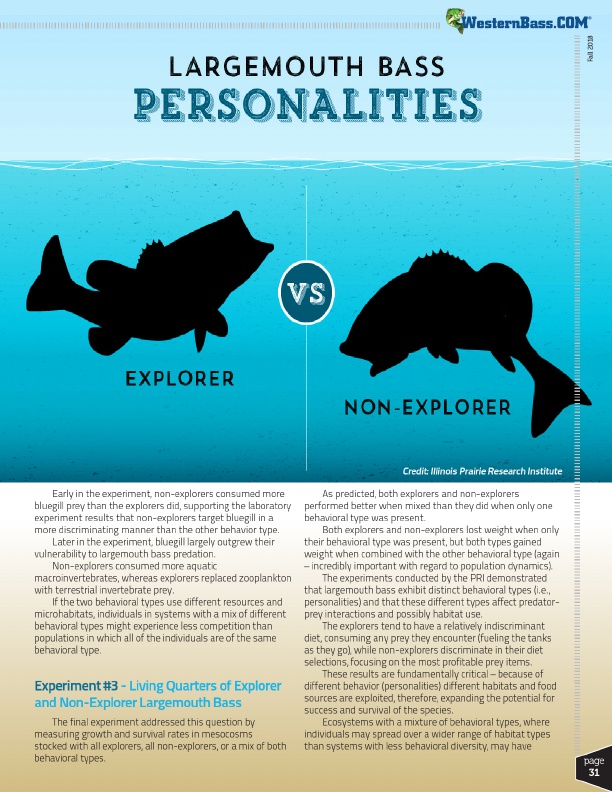
®
Fall 2018
Credit: Illinois Prairie Research Institute
Early in the experiment, non-explorers consumed more bluegill prey than the explorers did, supporting the laboratory experiment results that non-explorers target bluegill in a more discriminating manner than the other behavior type.
Later in the experiment, bluegill largely outgrew their vulnerability to largemouth bass predation.
Non-explorers consumed more aquatic macroinvertebrates, whereas explorers replaced zooplankton with terrestrial invertebrate prey.
If the two behavioral types use different resources and microhabitats, individuals in systems with a mix of different behavioral types might experience less competition than populations in which all of the individuals are of the same behavioral type.
Experiment #3 - Living Quarters of Explorer and Non-Explorer Largemouth Bass
The final experiment addressed this question by measuring growth and survival rates in mesocosms stocked with all explorers, all non-explorers, or a mix of both behavioral types.
As predicted, both explorers and non-explorers performed better when mixed than they did when only one behavioral type was present.
Both explorers and non-explorers lost weight when only their behavioral type was present, but both types gained weight when combined with the other behavioral type (again – incredibly important with regard to population dynamics).
The experiments conducted by the PRI demonstrated that largemouth bass exhibit distinct behavioral types (i.e., personalities) and that these different types affect predator- prey interactions and possibly habitat use.
The explorers tend to have a relatively indiscriminant diet, consuming any prey they encounter (fueling the tanks as they go), while non-explorers discriminate in their diet selections, focusing on the most profitable prey items.
These results are fundamentally critical – because of different behavior (personalities) different habitats and food sources are exploited, therefore, expanding the potential for success and survival of the species.
Ecosystems with a mixture of behavioral types, where individuals may spread over a wider range of habitat types than systems with less behavioral diversity, may have
page
31